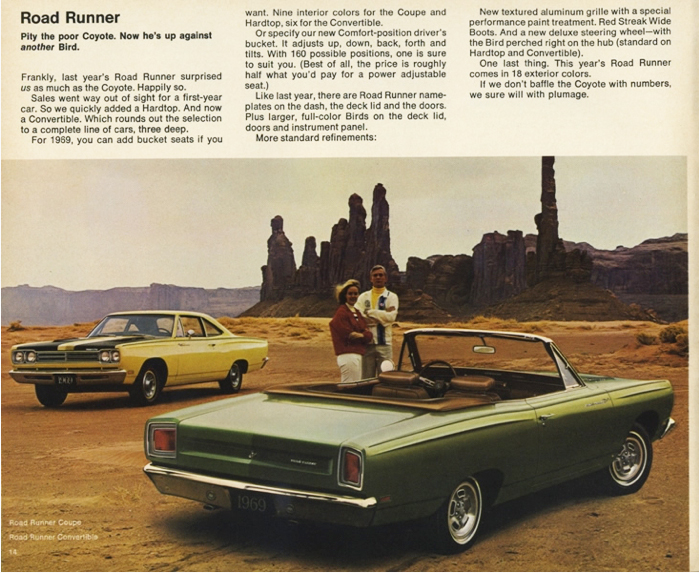Double Take
1969 Road Runner is a rare mix of colors and options.
By Jim Koscs Photos by Paul Stenquist
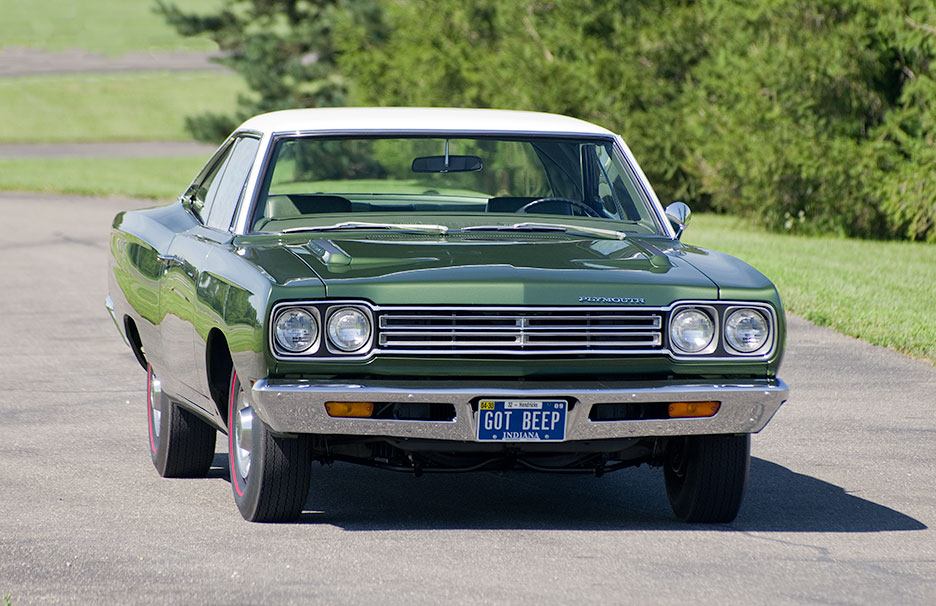
Restored by Jacobs & Angelly, this ‘69 Road Runner scored a 3rd Place in Original B-Body Plymouth ‘70-Down at the Mopar Nats.
When was the last time you saw a two-tone V02-code 1969 Road Runner? Since Plymouth made just 656 two-tone hardtops that year (1.35% of the 48,549 hardtops built), your chances of seeing one always had been a bit slim. Looking for one with a four-speed makes the chances slimmer still, while the ravages of time have further squeezed the odds of a sighting slimmer than Le Ann Rimes.
So, what did John Bauer do when he found just such a car, F8 green with a white roof, in 2001? He painted the whole car green, that’s what. Then, a year or so later, he looked at all the paperwork the seller had included in the deal and realized what he had.
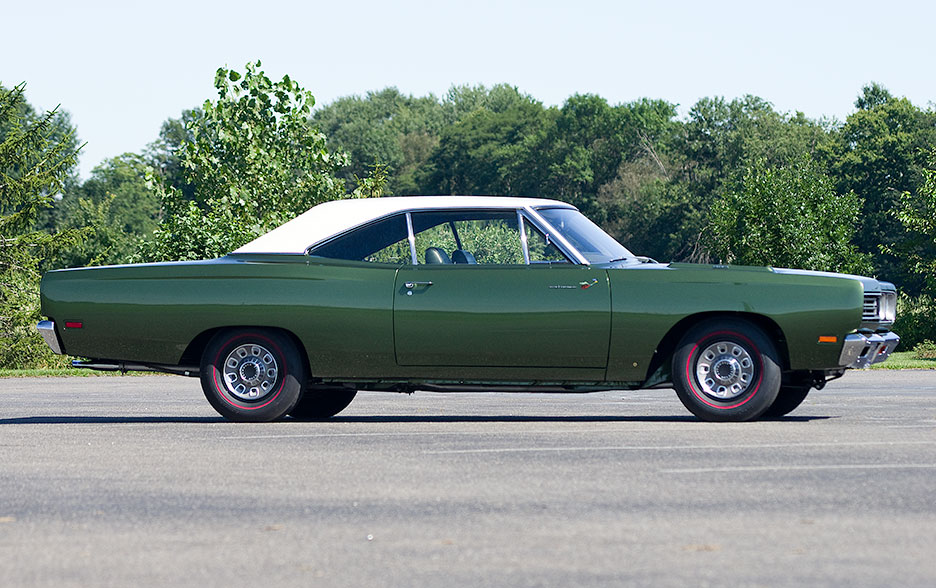
Bauer got the upgrade option full wheel covers in a box when he bought the car. You very rarely see them on a Road Runner, but they are pictured in the ‘69 ‘Runner sales brochure.
he had.
“I really didn’t care about the build sheet when I got the car. I was just looking for a fun driver,” Bauer said. That was to augment the 1968 Hemi ‘Cuda he built as a fun driver, and which Mopar Action featured in 2009. Back in 1975, the good old days of cheap used muscle cars, Bauer owned a 1968 Road Runner 383 four-speed with no power steering or air. “That was the family car. I had two young daughters at the time,” he said.

Bauer originally painted the Bondo-laden 2-tone beeper all green. When he realized how unique the car was, he had it restored to its original specs.
Bauer had scouted the Internet for a car like that, just a basic Road Runner with the essentials. He found one in Jacksonville, FL and got a detailed description over the phone. He was soon driving from his Brownsburg, Indiana home to Jacksonville with a trailer hitched to his Dakota and a cashier’s check in his pocket. The Road Runner had a 440 in it, but also came with the original but worn-out 383. The four-speed and rear were original.
The seller had been accurate in his description of the Road Runner, although he had neglected to mention that prior bodywork had relied more on Bondo than metal. “It was a 10-foot car,” Bauer said. (Odd, the factory specs say it’s a 16-foot car, must‘ve been a rare compact model.—Ed.) Still, Bauer was pleased with his purchase. The owner even threw in a box of full wheel covers. “I opened the box and thought, ‘These are Sport Satellite wheel covers. What am I going to do with these?’”


The Plymouth came with a swapped in 440, but the seller threw in the original worn-out 383 which Bauer rebuilt himself.
After having the car a year or so, Bauer realized he’d gotten his hands on a pretty rare Leafing through an original Plymouth brochure, he saw the wheel covers on a Road combination. The Road Runner had the four-speed, 3.23 rear, power steering, three-speed wipers and wheel covers, but was also a radio-delete car. Sounds like a great combo for a daily driver/fun driver car, as long as you don’t mind humming your own tunes or picking up a hitch-hiking Michael Jackson impersonator. As for the two-tone paint and full wheel covers, maybe the original buyer decided to splurge with the money saved on deleting the radio. Galen Govier confirmed the 656 hardtops built with the two-tone paint, but Bauer does not know how many of those came with the four-speed, and neither do I since I don’t get paid extra to do research.
Around 2004, Bauer decided to restore the Road Runner, taking it down to the bare shell and cutting out the bad sheetmetal. “My father had been in body work and was a perfectionist, so I guess that rubbed off on me,” he said. Bauer had also built some racing engines and reassembled the original 383 after having the machine work done. There was no rust in the frame rails, just the usual pinhole rust in the passenger side floor. Both floor pans and the trunk floor were replaced.
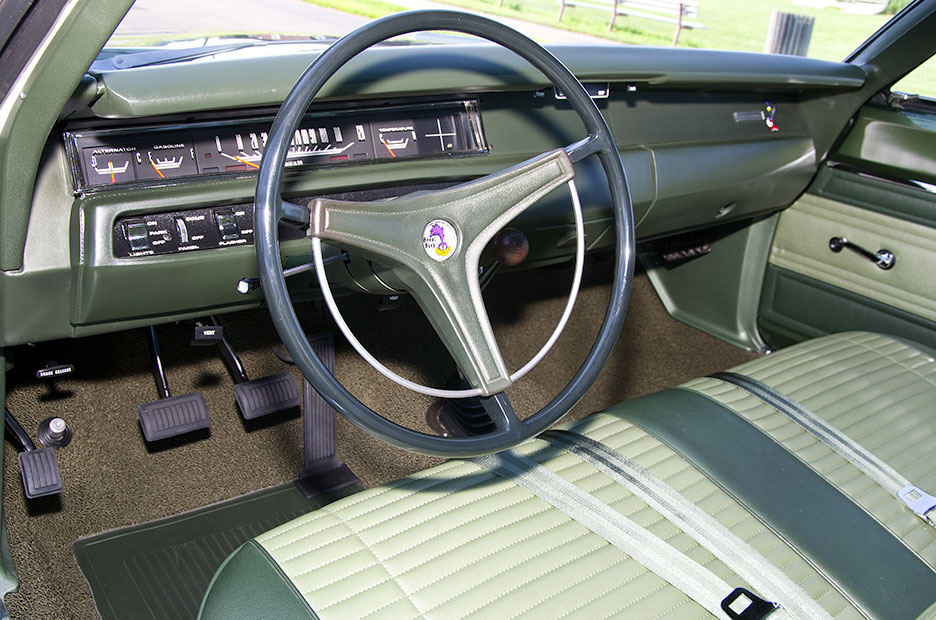

Radio-delete would be more common on a Hemi than a 383, but maybe the original owner had max’d out his checkbook with the two-tone paint and fancy wheel covers, or was waiting for a factory navigation/sound system to plug into the dash.
Bauer had Paul Jacobs rebuild the car’s hardware, and in the summer of 2010, took the plunge and turned the acid-dipped shell over to Troy Angelly to finish. Angelly happened to have an original Coronet fender in the correct green, with an area the sun had never shone on, and that provided the ideal match.
When Angelly was finished with the Road Runner, he turned it over to Jacobs for reassembly. The result arrived in May of this year, a car Bauer described as restored perfectly to OEM specs. “It’s super tight, not a single squeak or rattle,” he said. “They really did a fantastic job.” He noted that the car has all the paint drips and runs just where the factory originally shot them. All the glass was replaced with date-coded windows.
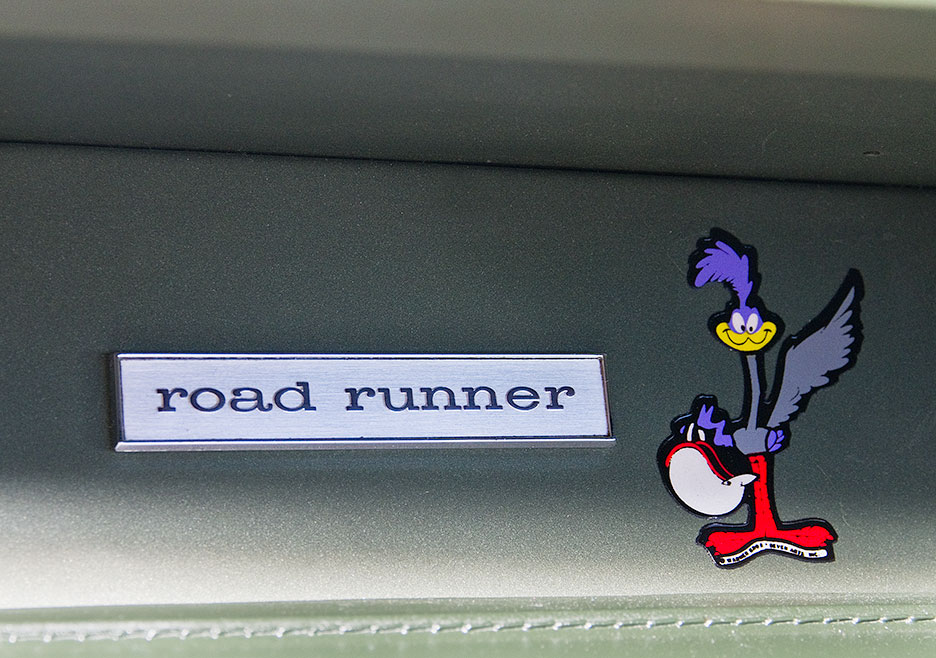
“All I did was install the exhaust tips,” Bauer said. What started out as a fun driver, however, has now become “too good to drive.” (Sort of like Mopar Action—“too good to read.”) So those hitch-hiking Michael Jackson impersonators are out of luck. Bauer plans to keep the Road Runner for a while, but will eventually sell it. “I’d like to see it go into a collection of someone who appreciates its rarity,” he said. (Or perhaps, the collection of someone with a fetish for green and white cars, or perhaps, someone who collects cars featured in Mopar Action.)
